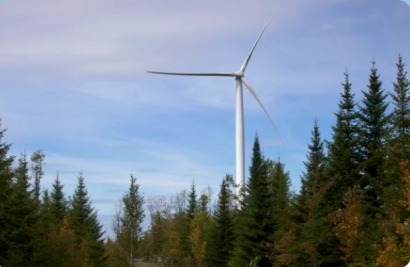
"The realization of this important first milestone demonstrates our determination to achieve energy sovereignty over the Nitassinan," said Marielle Vachon, Chief of the Innu First Nation of Pessamit.
"Having a full and complete majority interest in this proposed wind project, we are assured that it will be developed in a manner that respects our community's ancestral rights, culture and values, as well as promoting its economic and social development."
"As the first wind project to be majority-owned by the Innu First Nation of Pessamit, we are very proud of the historic nature of the signing of this agreement," said Michel Letellier, President and Chief Executive Officer of Innergex.
"Beyond the production of electricity from renewable sources, this project will bring significant economic and social benefits to Indigenous and local communities, reinforcing our commitment to regional stakeholders. Together, we are working to create an inclusive, sustainable and transformative energy future for Indigenous and local communities."
"The signing of this agreement by our respective communities marks an important milestone, not only in the development of the Peshu Napeu wind project, but also in our shared commitment to energy transition and sustainable development," said Marcel Furlong, prefect of the RCM of Manicouagan.
The Peshu Napeu wind farm project is named in tribute to Barnabé Vachon, who was known to the Innu of Pessamit as Peshu Napeu, meaning Lynx Man in Innu. Vachon was not only a respected figure in his community, but also a pioneer in defending the rights and interests of his people.
The long-term power purchase agreement is structured as a 30-year take-or-pay contract, indexed to a predefined percentage of the Consumer Price Index ("CPI") ensuring financial stability and protection against inflation.
On January 26, 2024, the Peshu Napeu wind project was selected in Hydro-Québec's call for tenders. Upon its full commissioning in 2029, the project will generate enough electricity to meet the energy needs of around 60,000 homes.
The project development process is ongoing, and the population will continue to be consulted and kept informed about the project in order to maintain collaboration with communities and ensure the success of this project, which will benefit future generations.
The project is subject to the execution of contracts with suppliers, and to the successful completion of permit application processes and regulatory requirements.

